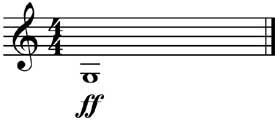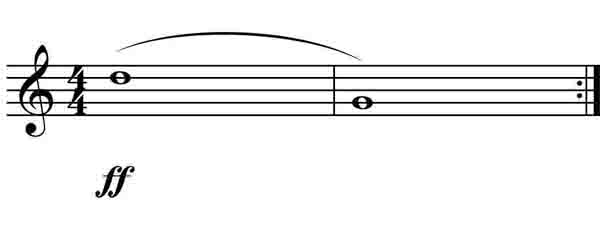Crossing the Break
Free Online Clarinet Lesson #7
Crossing the break – On clarinet, going from the chalumeau or throat tone registers up to the clarion register by operating the “register” or “speaker” key with the left thumb.
The “break” is a nickname to an interval that is commonly “broken” on clarinet. If you wonder how an interval is broken, think of it as "not smooth" or a gap in the sound.
First of all, Go get your Clarinet. Go Get your Clarinet, Now!
Listen to this Bumblebee
Yep, I played this Flight of the Bumblebee on Clarinet accompanied by a Squeeze Toy Giraffe. If you want to learn how to increase your speeds for any piece, etude or scale, the information is all here on Bumblebee Loops.
By the way, the video is not AI generated.
TRY THIS:
Also, find your mirror to take a look at some of the embouchure descriptions I’m going to describe below. It is important that you have these descriptions nearby, your clarinet and a mirror.

Play a nice, long-tone low G. Focus only on this note for now. Make sure it is a solid, full, clarinet sound. Try not to change dynamics and prevent any waves in the air and tone. For beginners, make sure you are covering all of the tone holes completely with the fleshy part of the fingers (read more about hand position here).

Now that you’ve established a nice sound, do this: Play a long low G at least a full whole note and then “pop” the register key up to the D (fourth line on treble clef staff). Hold the D out for a whole note as well.
What happened? Did the D come out smoothly or did the transition from the G to D break the sound?
CROSSING THE BREAK - WHAT IS SUPPOSED TO HAPPEN?
Gorgeous sound on the low G and a gorgeous sound on the D with a flawless transition. Both notes should sound like they belong together. Air is steady, embouchure is steady, and the thumb (already positioned and ready on the register key) pivots to open the key efficiently.
CROSSING THE BREAK - WHAT COMMONLY HAPPENS?
Commonly, a big “break” in the sound occurs. Hence the name, “break.” Or, a big bump to the upper D is heard. How about a “squeak”? Did that happen to you? Squeaks are no fun for you or your audience.
That is a big musical interval, right? From low G to fourth line D is an interval of the 12th. This interval brought about by operating the register key is unique to the clarinet family. On saxophone, the left thumb operates a very similar key known as the “octave” key.
Well, we think of this large interval and psychologically attribute the change of notes as hard. This makes us do wild contortions with our embouchure.
When I test my students on this very exercise, I have them blow through the notes and pay close attention to the chin. Often, this is what I see…
1. Chin movement
2. Biting down harder
3. “Strawberry” chin becomes Strawbarrier.
I declare now and henceforth that the description Strawbarrier was invented and coined on Clarinet-Now.com.
Strawbarrier means that you have a strawberry chin and since you bite down more to make the register change smoothly, the strawberry chin becomes more pronounced (and probably a little more red).
I could have spelled it strawberrier, but figured the “a” in barrier would signify the true barrier this embouchure causes for a smooth connection crossing the break. For more information on the Strawberry Chin, read and see photos at POOR CLARINET EMBOUCHURE and look at #9.
Other problems with Crossing the Break are:
1. Not enough air support.
2. Thumb is not positioned over the key and has to move “weirdly” to open it. This movement sometimes takes the thumb off of the left tone hole (creating a break or squeak). Read and see more about Left Hand Position here.
3. You concentrate so hard on operating one key, you depress other keys as well (the side G# key is often the culprit).
4. Sometimes the fingers come off of the tone holes slightly to create air leaks.
CROSSING THE BREAK - WHAT IS YOUR BODY TELLING YOU?
My friends - listen to your body. When your chin squeezes down to cross the break, your mouth is telling you to firm up the clarinet embouchure and possibly bite down more.
I, THE CHIN, KINDLY REQUEST THAT YOU, MY OWNER, FIRM UP YOUR CLARINET EMBOUCHURE IF YOU WANT A CHANCE AT CROSSING THE BREAK SMOOTHLY. OTHERWISE, GOOD LUCK.
SINCERELY, THE CHIN
When you play the lower note, G, and blow over the break and depress the register key to go to D, the chin scrunches and the teeth bite to get the higher note out. Your body is saying, “I need a firmer embouchure to get into the higher register.”
SO, LET’S DO A SIMILAR DRILL DESCENDING:

Start on the same D (fourth line treble clef). Play it as a whole note and then slur down to OPEN G. Keep the right hand down. Let’s concentrate more on the chin and embouchure than the fingers.
Try, and look in the mirror. D, slur down to open G.
How is your chin looking? Is it moving?
Most often, the chin DROPS with a descending passage below “the break.” So, watch yourself. Play the D then slur to G. WATCH YOUR CHIN. ATTEMPT TO SLUR TO THE LOWER NOTE WITHOUT DROPPING THE CHIN.
Keeping your embouchure steady, picking the fingers up efficiently and blowing through the interval change should sound really smooth and beautiful.
ONCE YOU HAVE ACCOMPLISHED THE DESCENDING PASSAGE, IT’S TIME TO RETURN UPHILL.

Play D, pick your fingers up to play open G, put your fingers back down to return to the D. WATCH THE CHIN. If you can play this interval nice and smooth and NOT move the chin, you accomplished your mission.
If your chin is perfectly stable and the interval is “broken,” perhaps all of your fingers are not closing down all at the same time.
Practicing Crossing the Break correctly takes time both on the part of keeping a stable chin, having proper air support, a good clarinet embouchure and moving all of the fingers at the same time.
Work on these short exercises very slowly and concentrate on one thing at a time. For instance, play a system of notes and look at the chin only. Or, look at the fingers only. Here you are teaching yourself focus, which is a trait colleagues, teachers, employers and future employers will find VERY valuable.
To have the best success Crossing the Break, you need to understand the Clarinet Embouchure well.
This page is written for Edith who asked the following question:
Questions?: Hi, well I am planning to help out a middle school clarinetist and I am in high school. She is having trouble going over the break and I have told her about air support and a steady embouchure but is there a certain way to help get the point across?
Edith, you are showing the true spirit of Clarinet Leadership. Good luck helping your clarinetist friend.
Sincerely, Chris


